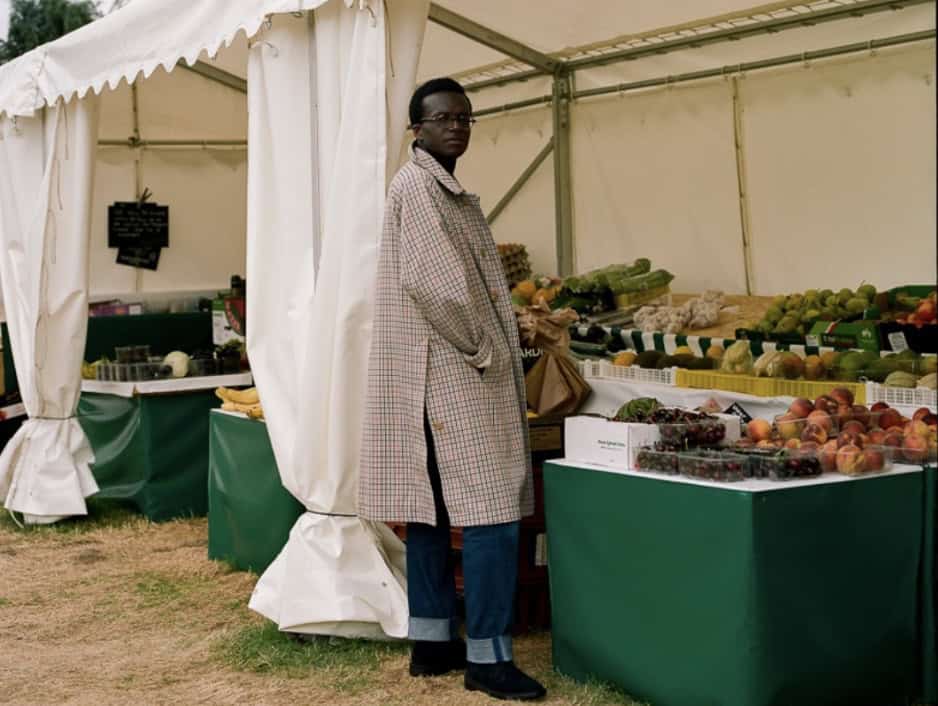Dress Code: Residence | FashionBeans
Dec 28, 2025How To Tie A Tie: 8 Knots Every Man Should Master
- Aug 19, 2024
- 0 Comments
911

It’s a fair question: just what, in the 21st century, is a tie for? Beyond the demands of tradition and convention, a tie doesn’t keep your neck warm and – outside of the workplace, and even then it’s not clear – seems increasingly at odds with an increasingly relaxed way of dressing. It might at first appear that we’re at the end of an era. After all, men have worn some kind of neckwear for millennia. Yes, even before there were offices, there was the issue of exactly how to tie a tie.
Of course, tie-makers will always offer a celebratory explanation for the survival of ties for all these years. “The tie has survived simply because, in the right circumstances, men look better in a tie than out of one – a tie knot frames the face,” argues Michael Hill, the creative director of tie-makers and menswear brand Drake’s. “And the fact that you don’t see ties being worn everywhere any more makes it all the more powerful a tool. You can use a tie – the choice of tie, and how it’s tied – to say what you want it to say. You can’t do that with many items of men’s clothing.”
These days the tie survives as a re-invented casual garment – worn in an easier, more rock ‘n’ roll way, with skinny knot and open neck shirt – but also, as shirtmaker Ignatious Joseph explains, “with a statement knot too. It’s precisely because, more and more, men don’t have to wear a tie. Now they wear one because they want to, and in a way they can enjoy.” The jury’s still out on whether most men truly enjoy wearing ties, but one thing we still don’t enjoy? Answering the pesky question of how to tie a tie, and tying a tie incorrectly.
How to Tie a Tie: The Best Tie Knots For Men
Full Windsor Knot
The Full Windsor knot is a neat, wide, safe option for any kind of formal occasion, and one of the most popular necktie knots. Wear it to your wedding, a friend’s wedding, work, or when posing as a Premier League footballer.
Cross the wide end of your tie over the narrow. Slip the wide end up between the tie and the collar and let it drop over. Bring the wide end down to the left and around the back of the narrow end to the right. Bring the wide end back up, through the neck loop, down to the right. Bring the wide end back up to the centre, through the loop and down to the right. Wrap the wide end across the front of the knot and feed it back up through the neck loop from underneath again and then down through the loop just made. Tighten the tie knot.
There’s also a Half Windsor version, though it takes just as long to tie.
Four-In-Hand Knot
The four-in-hand knot is a fail-safe, solid, slightly wider knot that is like a cousin to the Windsor knot. It can be worn anywhere. This is the quintissential all-purpose tie knot for men.
Cross the wide end of your tie over the narrow end and back behind. Repeat. Repeat again for a wider knot. Or, holding the coil of fabric in place, run the wide part up through the loop from underneath. Pass the wide end down through the tie knot. Tighten the knot.
FYI, the four-in-hand is named after the knot used in reins to control a four-horse rig.
Simple Knot
The simple knot is the quickest and easiest tie knot known to man. Rely on this failsafe method when you’re in a hurry, in a skinny suit, or dressing more casually.
Turn the tie ‘back to front’, so the underside is facing outwards. Cross the wide end underneath the narrow end. Take the wide end over the narrow and then up through the loop, from underneath. Pull the wide end down through the loop. Tighten the tie knot.
The simple knot is just that – easy to tie, producing the smallest, neatest of knots.
Grantchester Knot
A more formal alternative to the Windsor, the Grantchester knot is wide at the top and part of a family of ‘inside-out’ knots. Wear it at weddings, business meetings and anywhere else that you don’t want to have to keep adjusting your knot.
Start with the tie around your neck with the underside showing outwards. Keep the narrow end short. Pass the wide end under the narrow end, around the front of the knot, then under and around again. Then pass the wide end up through the loop, and down to the left of the tie knot. Then pass it around behind the knot, around the front and over the knot. Feed this wide end up through the loop. Finally pass it down through the centre of the knot. Tighten the knot.
This makes for a large, quirky, asymmetric knot best suited for use with silk or lightweight materials.
Fish Bone Tie Knot
The fish bone knot is an elaborate, criss-crossing knot that looks like it was folded by somebody with years of silver service experience. Wear it to your upcoming traffic court appearance, to meet your girlfriend’s parents, or whenever you want to make a great first impression.
Pass the narrow end of the tie over the wide end and feed up, under and through the loop. Pass it down to the right and back under the knot. Pull this narrow end out to the left, then bring it tight over and down through the loop and down to the right of the knot. Pull to the right and then feed the narrow end down through the loop again and down to the left of the tie knot. Then pass it over to the left side of the knot and down through the loop. Now pass it to the right side of the knot, up and through the loop again. Then around the front, to the left of the knot. Pass it back into the loop one last time and tuck it into the knot. Adjust.
One of the fancier, more formal tie knots, the fish bone mimics the herringbone weave found in some suit fabrics.
Plattsburgh Knot
Ready to take it up a notch? The Plattsburgh knot is a neat, triangular knot that takes practice to get right. A classic yet modern knot, it’s good for that job interview you have coming up.
Start with the tie around your neck with the underside showing outwards. Keep the narrow end short. Pass the wide end under the narrow end, up and down through the loop. Pull down to the right. Pass this wide end up and down through the loop. Pull down to the left and then across the front of the tie knot. Pass this wide end up and down through the loop again. This time also feed it through the centre of the tie. Tighten the knot.
The effect of the Plattsburgh is to create a balanced knot with a wide cone – the shape of the knot – but with a narrow opening – where the blade exits the knot.
Onassis Knot
An Onassis knot is a tie/cravat hybrid where the blade falls over the knot, rather than through it. Wear it to a party – its off-beat distinction will be a talking point. Don’t wear it to a wedding or formal event, or you’ll look like a crasher.
Pass the wide end of the tie over the narrow end. Pass it up and down through the loop. Pull it to the left and under the back of the knot. Then pass it up and down through the loop. Pull to the right, then pass the wide end over the front of the knot. Then pass this back up through the loop. Allow this end to then sit over the knot beneath it. Use this knot to tighten the tie. Leave the wide end hanging.
Proof that experimentation can lead to individuality, the Onassis was devised by the Greek shipping tycoon Aristotle Onassis.
Bow Tie
James Bond’s favorite is the bow tie, and it’s the black tie essential. Wear it to high formal events where dinner dress is stipulated. And when you want to hint that you’re man enough not to wear some nasty ready-made bow.
Turn the bow tie so the underside is facing outwards and the left side is shorter than the right. Fold the short side in half at your Adam’s apple. Bring the longer side up across the middle of this fold and down behind it. Fold this hanging part in roughly half and tuck into the loop created across the front of the bow. Pull on the folded parts to adjust until a neat bow tie is formed.
Tying a Tie: Things To Consider
Face Shape
As with any face-based accessory (sunglasses, hats, facial hair) the overall size and shape of your head should be taken into account when selecting a tie and knot.
Though most men won’t have to vary their choices too greatly, it’s important to maintain a sense of proportion. To avoid exaggerating its appearance, those with a slightly larger face should skip the skinny tie and similarly, guys with smaller or thinner heads should forego the fat knot.
Collar Shape
The simple rule of thumb is that your choice of tie knot should fill the space between the points of the collar, leaving just a little wiggle room either side.
As such, Dean Gomilsek-Cole, creative director of famed Jermyn Street shirtmaker Turnbull & Asser, argues that the safest, most versatile choice of shirt collar is anything not too extreme: neither a strong cutaway, nor a narrow pinned or tab collar.
Tie Material
Consider not just the cut of your collar, but the fabric of your tie. Tying a tie from traditional silk jacquard is easier to shape and the more formal choice, though harder to use for smaller, more complex knots.
“Men don’t typically think of ties as being seasonal either, but they are,” adds shirtmaker Emma Willis. “It’s a better look to wear, for example, a wool and cashmere tie in the winter, and a silk-linen mix in summer, for a more relaxed, casual feel.”
Of course, this can also be influenced by the suit material. The less texture in your two-piece, the more is wanted in your tie, and vice versa.
Formality
Dress codes are now sufficiently fluid that the question isn’t necessarily which knot to choose, but whether to wear a tie at all.
As a guideline: yes to job interviews, weddings (especially your own) and funerals (though, not so important at your own). No to office parties, the Sunday afternoon social and even date night. “But if you’re in two minds about whether or not to wear a tie, wear one,” advises Drake’s Hill. “It’s always better to be over-dressed.”
Color
Color choice can raise your elegance quotient: wear a shade darker than that of your suit. “The tie acts as a visual anchor, so needs to be different. Darker just looks more harmonious than lighter,” adds Hill.
The Knot
“The secret is to wear whichever tie knot best expresses your personality. There’s style value in finding your quirk and sticking with it,” says Hill. “Look at some of the best-dressed men. Prince Michael of Kent often wears very big tie knots, while Prince Charles prefers a small, tight knot – which is not so good for your ties. Either way, they own the look.”
Gomilsek-Cole from Turnbull & Asser agrees: “If you want to make up your own tie knot, why not? Though there are already hundreds of variations, so that’s not easy now,” he says. “My go-to knot is a Prince Albert, a variation of the Four-in-Hand knot that every schoolboy learns. Though you do have to be careful telling people you have a ‘Prince Albert’.”
How to Tie a Tie: Create A Tie Dimple
The mark of a well-tied tie, a dimple refers to the little fold just below the knot. Though it sounds like black belt sartorial origami, it only requires a little simple finger action.
When pulling the tie knot up towards your neck, grasp it either side with your thumb and index finger, leaving the forefinger free. This should be pressed into the top of the blade – the long, wider part of the tie – just below the knot and held there as the knot is moved up into its resting place.
The result is a small dimple that will stay in place as long as the tie is not loosened. Although it’s worth noting that the bigger the knot, the harder it is to produce a dimple.
“As well as being a style thing, a dimple does actually give a woven silk tie a shape that allows the fabric to catch the light,” says Gomilsek-Cole.
FAQs
What is the most common tie knot?
The Windsor knot is the most common tie knot, and one of the easier ways of tying a tie. Popularized by King Edward VIII, the Windsor knot is actually one of hundreds of knots created by men of influence. We’re typically focused around a core few, but you can get much more advanced with knots of ever greater complexity and fancifulness.
How did ties originate?
Roman Legionnaires wore their ‘focale’, but it wasn’t until the 16th century that the modern tie began its evolution. Mercenaries serving the French army wore a scarf as a means of signaling their comradeship – these fighters were from Croatia, and it’s from that we probably get the word ‘cravat’; King Louis XIV liked the look and, if the king wore it, anyone who was anyone did. From then, fashion dictated shifts in the type of neckwear, the material used for it, and how it was worn.
How you tied your tie was considered such an expression of personal style that the king, a man used to being dressed by servants, insisted on tying his own.
Where do you put a tie clip?
Traditional advice is that a tie clip (or tie bar) should go between the third and fourth buttons of your dress shirt. It should never go over three-quarters of the tie’s width, or hang over the edge. The width of the tie bar you choose should dictate the width of the tie you’re wearing. Or vice-versa.
Publisher: Source link







